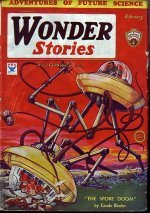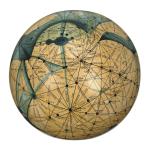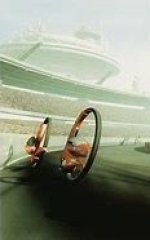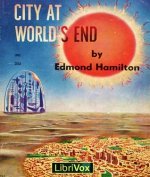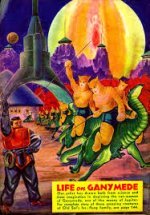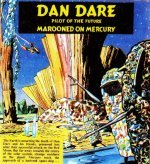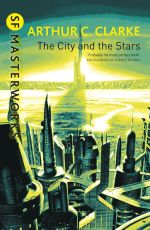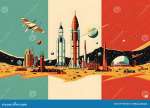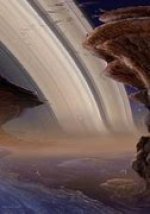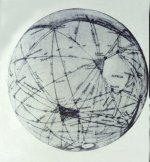the sunport vista:
zendexor's
oss
diary
February 2017
Thought for the day...
2017 February 28th:
PLUTO'S LIGHT-LEVELS AND COSMIC IMMIGRATION
The disguised alien - pretending it is human - chills the narrator's blood as it describes the Plutonian environment:
"...The sun shines there no brighter than a star, but the beings need no light. They have other subtle senses, and put no windows in their great houses and temples. Light even hurts and hampers and confuses them, for it does not exist at all in the black cosmos outside time and space where they came from originally. To visit Yuggoth would drive any weak man mad - yet I am going there...
"But remember - that dark world of fungoid gardens and windowless cities isn't really terrible. It is only to us that it would seem so..."
H P Lovecraft, The Whisperer in Darkness
Actually, however, I have gleaned from some astronomy text or other that it's not true to say that the sun shines "no brighter than a star" on Pluto.
In fact it shines with a light equivalent to about 250 full Moons.
When you consider how much brighter than any star even one full Moon is, you can imagine that one might even be able to read the local Yuggoth Times without the need of a torch.
With an echo of yesterday's grumble, I want to say I wish the beings from Yuggoth were real Plutonians. Unfortunately, they came originally from a "black cosmos outside time and space".
However, all is not lost. HPL may be allowing us some real Plutonians:
The black rivers of pitch that flow under those mysterious cyclopean bridges - things built by some elder race extinct and forgotten before the beings came to Yuggoth from the ultimate voids - ought to be enough to make any man a Dante or Poe if he can keep sane enough to tell what he has seen...
So "nativists" like me can hope that the bridge-builders were genuine Plutonians. As readers will have noticed by now, I am always pleased to promote the home-grown evolution of uniquely native life on our neighbouring worlds, against all that COMOLD interstellar riff-raff. (Or inter-cosmical riff-raff, in HPL's case.)
2017 February 27th:
BETTER TO HAVE KEPT IT SOLAR
...More than ever now Curt Newton realized how desperate was the chance he was taking. If the rebellious party didn't accept him, he would be ruthlessly silenced forever! His gaze rested on the long rows of spiky gray shrubs, baking in the glare of sunset...
"My holdings begin here," grunted Li Sharn as they passed a boundary marker in the fields.
Li Sharn's plantation was not a large one. Half-mile fields of vitron, badly weed-grown and neglected, surrounded a square, bare cement house to which were attached warehouse and bunksheds.
A couple of yellow-faced Uranians lolling lazily on the unswept verandah rose to greet their employer. Curt Newton followed the Saturnian into a slovenly living room...
He, the Saturnian, and the two Uranians shared a carelessly-cooked dinner which had been cooked by a stringy, sullen Neptunian...
Quite promisingly multi-planet OSS stuff, but unfortunately, the scene is not set in our Sun's family of worlds but in some remote star colony. (The extract is from Danger Planet by "Brett Sterling", a house name of the Captain Future magazine. Possibly the tale was in fact written by Edmond Hamilton.)
Why do I feel so strong an objection, when I find OSS heroes like Eric John Stark and Captain Future suddenly deserting the Solar System and gallivanting across the Galaxy?
It's partly the sense of opportunity lost. Those stories could have added to the cumulative character-building of our System's worlds.
But also it's the incongruity. Stark, in particular, has his career made lopsided, his earlier adventures diminished, by his excursion into interstellar space in the Skaith trilogy.
I'm tempted to suggest a re-write, like Lin Carter used to re-write some of R E Howard's modern adventures as Conan stories... not that I approved of that. Better leave well alone, I suppose. End of grumble. Let new neo-OSS authors augment the scene with new stuff. That's the way forward.
2017 February 26th:
THE OSS AS A HANDY PROP
Sometimes the Old Solar System is just there to provide room for plot-sprawl.
Nothing wrong with that. Take, for example, Cyril Kornbluth's story The Adventurer.
I suppose the rise of a dictator is quite a common theme, but I've never found any other treatment of the topic which resembles this one. Its idea is a unique, intriguing bit of psychology applied to politics.
It could have been set entirely on Earth. But it helps the writer if he can expand the boundaries of his action out into the Solar System. It gives him more elbow-room and absolves him from a search for Earth-locations which might, by their associations, deflect the reader's attention and the writer's effort into irrelevancies.
...Mrs. Grayson, widow, of New Pittsburgh, Io, disappeared one night. It was in all the papers and on all the broadcasts. Some time later she was found dragging herself back across the line between Nizhni-Magnitogorsk and New Pittsburgh in sorry shape. She had a terrible tale to tell about what she had suffered at the hands and so forth of the Nizhni-Magnitogorskniks. A diplomatic note from the Republic to the Soviet was answered by another note which was answered by the dispatch of the Republic's First Fleet to Io which was answered by the dispatch of the Soviet's First and Fifth Fleets to Io...
We don't get any real feel for Io as an individual world; it's just there as a prop. But - as I said before - this isn't a criticism. The OSS has many uses and in this case it's just there for elbow room in an excellent story. A satire, if you like, but not with the shallowness that the word "satire" can evoke. It's about a scientific deception - a masterpiece of social engineering - a desperate attempt to revivify a decaying culture, by means of a trick which goes disastrously wrong... Read it and admire Kornbluth's wit and skill.
2017 February 25th:
ALFRED BESTER'S ARTIFICIAL SPACE STRUCTURES
Bester's two 1950s classic novels, The Demolished Man and The Stars My Destination, are set in a System-wide civilization, but they do not go out of their way to provide much in the way of character for the otherworldly settings of the OSS. The brilliance of the plots, the pace, the action, the ideas, the character-studies, are sufficient for us to class the books as works of genius, without a need for us to demand evocative landscapes and alien cultures as well. Besides, the function of the System-wide setting is mainly as an arena for the megalomania of Bester's two "heroes".
..."After Monarch and D'Courtney become Reich, Incorporated, you watch me eat up the rest... the small ones... the fleas. Case and Umbrel on Venus. Eaten!" Reich brought his fist down on a torso-shaped side table and smashed it. "United Transaction on Mars. Mashed and eaten!" He crushed a delicate chair. "The GCI Combine on Ganymede, Callisto, and Io... Titan Chemical and Atomics... And then the smaller lice: the backbiters, the haters, the Guild of Peepers, the moralists, the patriots... Eaten! Eaten! Eaten!" He pounded his palm against a marble nude until it toppled from its pedestal and shattered...
But there is one exception to the lack of "otherness".
Bester is good at artificial asteroids.
Ben Reich in The Demolished Man plots a murder on "Spaceland".
...Spaceland had started several generations back with a flat plate of asteroid rock half a mile in diameter. A mad health-cultist had raised a transparent hemisphere of Air-Gel on the place, installed an atmosphere generator, and started a colony. From that, Spaceland had grown into an irregular table in space, extending hundreds of miles. Each new entrepreneur had simply tacked another mile or so onto the shelf, raised his own transparent hemisphere, and gone into business. By the time engineers got round to advising Spaceland that the spherical form was more efficient and economical, it was too late to change. The table just went on proliferating...
The attempted-murder scene on Spaceland is perhaps the most memorable extraterrestrial scene in the book. And in The Stars My Destination we have:
...the Sargasso Asteroid, a tiny planet manufactured of natural rock and wreckage, salvaged by its inhabitants in the course of two hundred years.
They were savages, the only savages of the twenty-fourth century; descendants of a research team of scientists that had been lost and marooned in the asteroid belt two centuries before when their ship had failed. By the time their descendants were rediscovered they had built up a world and a culture of their own, and preferred to remain in space, salvaging and spoiling, and practising a barbaric travesty of the scientific method they remembered from their forebears. They called themselves The Scientific People...
Reminiscent of Leigh Brackett's Citadel of Lost Ships.
This notion of gradual accretion of structures in space is especially intriguing insofar as it's hard to set a limit to it. I suppose a limit would eventually be reached if the total mass became so great that its gravitation began to be perceptible, so that the engineering would no longer be taking place in a weightless environment. But it would have to be really vast for that to happen.
Someone who knows the physics and the maths might try to calculate when that point might be reached... I doubt if even the Star Wars Death Star would have been big enough - though it of course must have had artificial gravity, to judge from the demeanour of its crew.

2017 February 24th:
THE TRAIL OF TROPE
Sometimes an OSS theme can leave a wake or trail beyond the OSS boundary.
My diary entry of yesterday, focusing on frozen intelligences in the Moon in Colin Wilson's The Mind Parasites, jogged me into thinking of another work, this time a mostly interstellar tale, which nevertheless reaches a climax on our Moon, and, like the Wilson novel, has as its background the premise that the Moon has had, for long ages, a baleful influence upon the Earth.
The interstellar tale is Bob Shaw's The Ceres Solution.
In both tales, discovery of the Moon's influence upon us leads to an attempt to destroy the satellite by drastic means. However, the explanation of the nature or - shall we say - mechanism of the lunar evil is quite different in the two novels.
From the literary point of view, The Ceres Solution is an altogether greater achievement than The Mind Parasites. Wilson writes competently, and his noble obsession with our need to expand our human consciousness breathes through all his sf in a manner which I find liberating. Shaw on the other hand is a pure storytelling genius with a breathtaking mastery of the English language. His characters, besides, are vividly memorable, whereas Wilson's are forgettable.
But my main motive in this diary entry is not to compare the two novels. It is to celebrate the fascinating overlap between them. It is to point at the eerie theme, "disembodied lunar influence", and marvel at how it has acquired a life of its own in this particular precinct of human imagination.
2017 February 23rd:
A LINK BETWEEN SOLAR AND LUNAR LIFE
Colin Wilson, on page 161 of The Mind Parasites, propounds an idea which I want to quote out of context. Why out of context? Because: he unfortunately (in my opinion) combines itm with a ridiculous theory that the Earth has had four different successive Moons. A theory which - for me at any rate - demeans our Moon. But his passage is full of great possibilities.
...Life that could gain a foothold on the sun would certainly not be "physical" in the sense that we understand it... A great burning fragment had been torn from [the] sun by a passing comet, and the hot gases had condensed into the moon as we know it today, gradually destroying its inhabitants. But since they were not "bodies" in the earthly sense, they could not die in the ordinary way. They tried to adapt to the cooling matter of their world, becoming a part of the molecular structure of the solid as they had once been a part of the structure of the hot gas.
So the moon remains "radio-active" with a strange, alien life.
If the moon had not been captured by our earth, this alien life would have died long ago, for life can only exist where the second law of thermodynamics operates - that is to say, where there is energy flowing from a higher to a lower level. But the moon was kept "alive" by the closeness of the earth, a planet seething with life and energy. Its presence was like the continual smell of a hot dinner to a starving man...
Eerie, sinister, fascinating - the notion of quasi-life, of a haunting which originates in a theme close to the boundary of the supernatural in the sense that "energy" can approach to a spiritual concept... someone could write a real corker with this theme. A horror-and-beauty tale.
Stephen King, I think, could not do it, because although he is a master of contemporary horror, he can't create Otherness-for-its-own-sake. That's why - for example - in The Tommyknockers we don't get a real alien civilization, though we get a good alien invasion from the purely human perspective.
There is a great moon horror-novel waiting to be written. A novel on Wilson's theme, of dangerous intelligences trapped in the fabric of our satellite. One might take it further: some of the trapped forces might be solar, some native lunar - evolved during the orb's molten stage.
2017 February 22nd:
INFRARED OSS
Following on from yesterday's remarks about seeing in different ways:
This idea can provide a kind of bridge between the Old and New literary Solar Systems. To admit the idea as a literary device is to genuflect in the direction of Modern Science, and once one has received its blessing one may scarper off and use infrared for all sorts of old-fashioned purposes.
..."And the explosions, Fourmyle. They're not just clouds of light. They're fabrics, webs, tapestries of meshing colours. So beautiful. Like exquisite shrouds."
"Which they are, Lady Olivia."
Thus Alfred Bester in his masterpiece The Stars My Destination, using science as part-prop and part-trigger, depicts the "blind" mass-murderer Olivia Presteign who can actually see in the infrared...
However, with an author who knows a lot more science than Bester does, the result can have that extra interest that comes from the "hard" end of the sf spectrum.
...Without instruments, no man could have seen morning on Jupiter. At the bottom of that monstrous atmospheric ocean - mostly hydrogen, much helium, a few percentage points of methane, ammonia vapor, and other gasses - the only visible illumination on land was from the frequent great lightning flashes. Then cloud banks might stand forth in miles-high red and tawny precipices, until blackness clamped down again. But Theor's two eyes, golden in hue and thrice the diameter of man's, saw by infrared as well as the longest red wavelengths. To him, a brightness climbed swiftly out of the night mists that still rolled across Medalon, tinting them in a thousand rich shades, spreading across the vast, roiling arch of the sky...
So Poul Anderson gives us a Jovian dawn in Three Worlds to Conquer. He is still unscientific enough to give us a Jupiter with a solid surface - thank goodness - but he realizes, as perhaps Bester doesn't, that Olivia Presteign's eyes would have had to have been, like Theon's, "thrice the diameter of man's", for her retinas to have received all that infrared.
Both authors give us stuff that works, in literary terms. It's just a matter of choosing where you stand. The only place a good OSS writer can't choose on which to stand, is absolute realism. But there are endless fascinating half-way houses...
2017 February 21st:
TRUE FALSE COLOUR
Some months back I filed a newspaper cutting which shows a New Horizons probe image of Pluto's moon, Charon.
It's a superb image, showing a rugged world with character, not just uniformly cratered but with canyons and mountains.
However, it's in slightly "false colour": one of Charon's polar regions shows up exaggeratedly red, to indicate the presence of - if I remember correctly - frozen methane. So this colourful aspect is not genuine.
Or is it? There's another way of looking at it. And here we bring in our favourite sub-genre.
One could say that the colour is only "false" to our kind of eyesight. Beings who have evolved a different type of optical equipment might see the red naturally - for real. And then human explorers might get involved in this colourful way of seeing, if some telepathic rapport could be established, or some other technical-biological fix could be achieved. Patter-patter, the excuse factory goes into production, and we end up with a story in which we see the bright colours of Charon, or wherever.
All this furnishes an example of how fiction and science sort of bend each other, each exerting a kind of pull on the other. The science sets constraints on the fiction, but the fiction gets its own back by using the science as a costume or prop for its own purposes.
Which is fair enough, since the products of imagination are all real - that's to say, they are real events in our brains. And our brains are real. So there.
2017 February 20th:
WHAT IF OUR TIME-SCALES ARE WRONG?
I don't know about you folks, but I'm thoroughly steeped in the current chronology of the Solar System, at least to a roughly accurate extent: that is to say, I'm comfortably used to the idea that it's on the order of 5 billion years old - the Earth being about 4.6 gigayears of age, and the other system bodies presumably about the same, with the Sun itself (one assumes) being slightly but not much older.
One of the interesting aspects of reading old literature is to imagine oneself into the mind-set of authors to whom a drastically different chronology was quite natural.
...So I travelled, stopping ever and again, in great strides of a thousand years or more, drawn on by the mystery of the earth's fate, watching with a strange fascination the sun grow larger and duller in the westward sky, and the life of the old earth ebb away. At last, more than thirty million years hence, the huge red-hot dome of the sun had come to obscure nearly a tenth part of the darkling heavens...
Thus reports the explorer in Wells' The Time Machine... whereas from our 21st century vantage we can say, gosh, how soon! A mere thirty million years - no way! The Sun will stay on its main-sequence phase for another few billion years, albeit gradually heating up. In a mere thirty million years its red-giant phase will still be, proportionately, almost as far ahead as it is now.
In another great old book, however, we find that time-scales are not shorter but much longer than those we are used to thinking of as true.
I refer now to Stapledon's Last And First Men, page 285 of my paperback edition, showing Time Scale 5, where the formation of the Sun is given as being over five trillion years ago. Yes, a 5 with twelve noughts, instead of nine.
Now, this puts me in mind of some possibilities. Just suppose, for some reason, it was discovered that Stapledon's chart was right - that the age of the universe, and the solar system, really did allow for things being that old.
Think of the range of ancient OSS cultures there'd be room for then! The stretch of the past is huge enough as it is - imagine if it were a thousand times greater...
I wonder what the excuse would be, to have time stretched so far. We'd have to postulate some misunderstanding, or unexpected aspect, of current calculations based on radioactive decay.
Surely the sf fraternity would be equal to that...
2017 February 19th:
HPL'S MOON?
Just a quickie today, as I have been spending much time on other site-maintenance stuff, including arranging a new Intrepid Travelogue contribution from Dylan, and starting up the Venus Quiz.
I'd like to ask the readership about the references to "moonbeasts" in Lovecraft's The Dream-Quest of Unknown Kadath. This is a work I have never properly read. It seems to me to be rather indigestible, but I also suspect that some day I may change my mind and begin to like it immensely. Anyhow, if there really is any actual scene in it set on the moon, I'd be pleased to know.
What a pity HPL didn't do more Solar System stuff. Apart from In the Walls of Eryx, set on Venus, he left us with mere CLUFFs - such as the fascinating reference to the insect-philosophers of Callisto.
I suspect he'd have been especially good at a sinister asteroid tale, like Clark Ashton Smith's masterpiece, Master of the Asteroid. Perhaps when the DeLuxe Automatic Pasticher is invented, we could have as high-priority output an HPL Asteroid story.
2017 February 18th:
ERB AND HIS IMITATORS - ANOTHER STYLE-COMPARISON
I like doing this. Here are two mildly sententious soliloquies; can you guess which one is Burroughs and which one is Moorcock?
Exhibit A:
I had a feeling of unease then. As I have mentioned before, I seem to be slightly psychic - or whatever you care to call it. I have some sixth sense which warns me of trouble. Some would call it the logic of the subconscious which accumulates and draws conclusions from data which never reaches the conscious mind...
Exhibit B:
There are emergencies in which the mind functions with inconceivable celerity. Perceptions are received, judgements arrived at and reason operates to a definite conclusion all so swiftly that the three acts appear simultaneous. Thus must have been the process in this instance...
Well, before I say which is which, let me say what I think of them. I find both of them are reasonably good. Alert to minute variations in tone, I might give the first one slightly higher marks for clarity, while I prefer the second one for its rhythm, and the special impact of the sentence which begins "Perceptions..."
It just goes to show, it's worth trying to write a good pastiche. Moorcock has his moments. Unfortunately he can't keep it up, and as I have said elsewhere, his Mars seems unsatisfyingly un-Martian - though that is a separate issue from that of literary style.
Anyhow, just to confirm what you expert readers doubtless already know:
Exhibit A is from the Kane of Old Mars trilogy by Michael Moorcock (to be precise, it's from page 25 of Lord of the Spiders); Exhibit B is from A Fighting Man of Mars, the seventh in the Barsoom series.
Who knows, if Artificial Intelligence progresses enough, one day someone may develop a Pastiche Creator, which analyses an author's works and allows the user to output sequels. Put the works of ERB or Clark Ashton Smith into the scanner, then click on "parameters" and input the main themes of the pastiche you want written. e.g. "adventure on Mercury" or "adventure on an inhabited Moon" or "sortie among the asteroids" or whatever. Then hit "Proceed"...
2017 February 17th:
OLD-FASHIONED MOON BASE WITH A DIFFERENCE
More on E C Tubb's Moon Base: and this time I want to end by mentioning several literary "overlaps".
Moon Base has a certain old-fashioned feel which I like, a nostalgic waft such as one would expect to sniff in a British moon-base in a book that is written early enough, moreover, for the reader to be told things that are now taken for granted. But the plot is also haunted by hints of something special impending. A fate is hanging over the base, something which (the reader is made to feel in his bones) will turn out to be most unexpected.
A challenge to the laws of probability.
...There was no natural time on the moon. There was a fourteen day "night" and an equal period of day on the surface but in the station it was always the same and time, by the old system, was merely a useful appendage to living; not something which controlled the hours of sleep and activity.
It was, to Felix, an interesting routine. Meals were always the same size, altering in variety but with nothing to differentiate breakfast, lunch, dinner or supper. The personnel ate when they felt the need of food and slept when sleep became a necessity. Most of the time they worked and when they relaxed it was usually to exercise at manual labour or to do work of choice rather than of schdule.
It was, he thought, a little like the hive of a colony of ants but without the sharp diversity of types... There were men and women, all mature, all, apparently, well-adjusted. There were scientists and skilled technicians of both sexes. There were soldiers; again of both sexes but, aside from the insignia on their coveralls, there was no way of telling military and non-military personnel apart. Social barriers simply did not exist.
And, to any psychologist, that was all wrong.
It was wrong because it wasn't normal...
Now for the overlaps.
Scientifically, we're partly in the territory of Barrington Bayley's The Grand Wheel, with its "luck equations", though here the medium is not mathematical but biological. And stylistically or atmospherically, we're partly in the territory of Frank Herbert's The Santaroga Barrier.
What's going on is big, big... and it's to do with a Big Brain; and here we're partly in the territory of Edmond Hamilton's Fugitive of the Stars, though only as regards imagery, not conclusions.
All this won't mean much to those who haven't read those other books. But with those who have, this is a message in a bottle, an invitation to compare impressions.

2017 February 16th:
THE LIVING LIFELESS MOON - CLARKE'S A FALL OF MOONDUST
On the Moon page I have stressed that a world does not need to have life in order to have character.
One of the most powerful instances of this is A Fall of Moondust. The very word "dust" in the title is a brave defiance of organic bias.
Once you exclude what the biologists call "life", you're left with something which in some ways is even more interesting, because it's such a challenge to explain how Clarke's genius "brings to life" the lifeless. To start with one might say that he does it partly through his style, as when he shows us the skipper of a "boat" on the "Sea of Thirst", unaware of the peril ahead as he shows tourists around this lake of dust.
...Taking his time, Pat made two complete circuits of the lake, while the floodlights played upon its encircling walls. This was the best way to see it; during the daytime, when the sun blasted it with heat and light, it lost much of its magic. But now it belonged to the kingdom of fantasy, as if it had come from the haunted brain of Edgar Allan Poe. Ever and again one seemed to glimpse strange shapes moving at the edge of vision, beyond the narrow range of the lights. It was pure imagination, of course; nothing moved in all this land except the shadows of the sun and earth. There could be no ghosts upon a world that had never known life.
Well, life or not, there could be no ghosts anywhere, according to the rationalist Clarke; but his imagination is greater than his philosophy, so that his works resonate with a qualitative and spiritual dimension, whose manifestations cluster in poetic references around the events in his plots.
Something is getting a free ride here. One or other aspect of his thought - the rationalist or the spiritual - is dodging the requirement to pay the intellectual fare; as for which of them you think is the freeloader, that depends on your own point of view. But certainly, in literary terms, this parallelism does brilliantly succeed. In particular, Clarke is peculiarly suited to writing about a lifeless Moon.
In Earthlight (1955) the Moon is mostly barren, though it has a few rare examples of plant life; in A Fall of Moondust, which appeared early in the following decade, our satellite has no native life at all. Both novels bring out the beauty of the Moon in its silver purity, its receptive silence, its haunting magnificence. And, set with splendid contrast against this backdrop of eternity, both novels also give us plenty of human drama and mundane excitement.
Clarke is rightly confident that the real Moon is lovable for itself and needs no exaggeration.
...The huge craters which looked so impressive on photographs taken from Earth turned out upon close inspection to be gently rolling hills, their relief grossly exaggerated by the shadows they cast at dawn and sunset. There was not a single lunar crater whose ramparts soared as abruptly as the streets of San Francisco...
Not like the jagged Moon on pictures in old sf magazines, in the really old OSS. Which brings me to the need to tackle the question: is A Fall of Moondust OSS literature at all? How can it be, when it is so scientifically realistic?
Ah, but I've dealt with that point on the Moon page, as I recall.
Old tales of this kind may be realistic as regards the Moon, but they are a pleasant old-fashioned nostalgic fantasy with regard to the personnel from Earth.
2017 February 15th:
CHRONOLOGY OF LEIGH BRACKETT'S OLD SOLAR SYSTEM
The masters (and mistresses) of the classic OSS tend not to have their hearts really into the business of chronological exactitude. There's no OSS equivalent of Tolkien, whose loving attention to detail gives us the exact table of dates for Middle-Earth (at least, from its Second Age onwards). A partial exception to this is Robert Gibson, whose neo-OSS Uranus is given detailed chronology, as far as the era-boundaries are concerned (see Uranian Gleams).
However, so strong is the magic of the classics, that readers aren't content to leave them in their unsatisfactory chronological state.
I now wish to draw your attention to a fascinating on-line essay by one "Blue Tyson", entitled Leigh Brackett's Future History - Connecting the Stories: An Examination.
He doesn't get very far, because the internal evidence doesn't allow him to do so, but it's a pleasure to see how he tries. A noble effort! And on the way, naturally, he gives us a pretty good guide to the Brackett Solar System.
He also ranges further afield, because of course Brackett's stories sometimes take us out into the Galaxy. Indeed, like Asimov's series of "Lucky Starr" adventures, we often get the feeling that even the Solar System tales are sometimes contemporaneous with interstellar travel. After all, Eric John Stark eventually leaves the System and goes adventuring on Skaith, planet of the Ginger Star (most unfortunately, in my view, because I find, for reasons which I find hard to justify, that an interstellar range distorts the OSS context, so that they don't mix well). (It doesn't matter much in the Lucky Starr series, because the action is all in the Solar System.)
But I've digressed from the topic of chronology.
I want to grumble a bit about "a million years".
When writers don't bother with exact time-frames, they often start to use "a million years" adjectivally rather than mathematically, so that it simply means "on the order of magnitude of a million years", or more simply, "a heck of a long time". Thus, a million years ago Mars had oceans; a million years ago Mars' oceans dried out; any big change, any big difference, occurred a million years ago - even if it's vastly more likely that the events occurred at least a million years apart. The true figures are lost in the mists of time.
Could we have something happening "two million years ago" for a change? Or any other figure? At least the Barsoomian Tree of Life was 23,000,000 years ago. I like that.
Perhaps ERB had a thing about the digits 23. I seem to remember that Ras Thavas' fortress was 23,000 years old. Though as usual we're not told whether the "years" are translated into Earth terms, or are Martian.
2017 February 14th:
HAPPY VALENTINE TO THE GORGEOUS OSS
Love takes many forms, aesthetic as well as erotic! Love of literature, love of the particular "colour" which comes from certain themes, that have taken on a life of their own, so that, although they're out of date in one way, they're securely established in a zone where the date doesn't matter.
Sometimes the spine tingles when an otherwise "realistic" writer dares and succeeds - such as D F Jones' stroke of genius in his epic trilogy about an Artificial Intelligence's tyranny over mankind.
The domination of Colossus is threatened by a scarcely believable message from outer space, suggesting we might have an ally out there against the computerised monster we created:
"...As you've said yourself, outside this house I can't breathe without it being checked... but if it is going to be any use... it has to be now."
"Yes." Forbin was thinking. "What convinces you that this call is genuine?"
Blake saw Forbin's awakening interest. He spoke quickly, putting all the conviction he had into it. "Beyond question, the transmission itself. I know the idea of life on Mars has gone in and out like the tide for the past three hundred-odd years; I agree that there has been little supporting evidence, but the transmission is another matter. I checked it, Charles. I've no doubt at all that our technology couldn't touch it! It was a beam with a radius you could measure in meters! Laser beams from moon stations are wider than that one was... This must have traveled over thirty-four million miles!"
"If it came from Mars."
"Sure, if it came from Mars. But look at it this way. If it didn't come from Mars - where did it come from? For sure it wasn't the moon or a satellite. I checked. So where? The time delay was about right. Six minutes for the round trip."
"Yes, but that, as you must agree, could be a trick. Could not the whole thing be a trap?"
"D'you really think Colossus acts that way? And what about the technology? No. I've gone over and over it; it must be Martian."
"Incredible! Quite incredible."
"Not to me..."
D F Jones, The Fall of Colossus (1974), p.100-101
The author gets the level of incredulity right. If you manage that, you can make the astounding acceptable, in literary terms. It's a matter of showing respect for science, and then, after you've shown your respect, proceeding to flout it. It's like a sort of entrance fee, so to speak. You pay it by acknowledging how hard it is to believe something, and then you're freer than you were before, to work that hard-to-believe thing into your plot.
D F Jones certainly needed to take this literary precaution. The Fall of Colossus came out after Mariner 9 had surveyed Mars.
2017 February 13th:
EXPEDITION DIARY
The expedition diary is a good format for a rambling adventure tale. I think it's a pity it hasn't been used more often.

Exploring in my collection I came across an old Gordon A Giles story, Via Asteroid (Thrilling Wonder Stories, February 1938) - misleadingly named since it's all about the first Mars Expedition. (The asteroid in the title is just used as a gravitational assist for the return journey.)
This story is relaxedly anecdotal, a chatty report transmitted to Earth. Because it's in diary form, it's just one thing after another. Not ambitiously profound, nor convoluted; just a pleasant browse in the loosely disciplined OSS Age of Discovery.
...we are at present busily engaged in manufacturing rocket fuel for the return trip. My last report, made almost two years ago, stated that our ship was a ruined tangle so I will have to explain.
The situation two years ago was this - the ferocious three-foot ant-creatures had besieged us in our clay house and were attacking each day...
The reader who is interested in the history of chronology can derive extra fascination from these old tales. We're used to thinking of Earth's Archaean period as being over four gigayears ago, but not so in the 1930s:
...Parletti estimated the beginnings of life on Mars as three billion years ago! The planet, he says, passed its prime over a billion years ago, when Earth was still a hot restless globe of steaming rocks...
Another reason for liking the story is what it indicates to us about literary overlaps. Like Weinbaum's Valley of Dreams earlier in the same decade, Via Asteroid suggests that the ancient Martians influenced Man - that they once visited Earth.
...It was a pyramid so similar to those of ancient Egypt that they thought they were having hallucinations. Dordeaux fell to his knees in the sand and almost fainted. The whole thing was a puzzle. The inscriptions around the base were unlike those of the Egyptians but had a haunting familiarity...
Dordeaux raves - it is the only correct word - about a Martian visitation to Earth only ten thousand years ago. It remains a mystery...
If that is startling, what about the other party finding in the ruins of a canal city a perfect representation of Neanderthal Man of Earth? It cannot be of the Martian race for they are or were insectal...
No COMOLD here, thank goodness.
Mediocre, undemanding tales like this are a special joy, for we can trust them to stay within a certain traditional zone of colour and gusto.
Perhaps one day they will all be summed and analyzed and we will learn more exactly of their overlapping and accumulating contributions to the characters of worlds in the Old Solar System.
2017 February 11th:
I am spending the weekend away from home, hence away from my library. Normal diary service should be resumed on Monday. In the meantime I can be improving the links between some past diary pages and the rest of the site... there's a lot of work to be done on that.
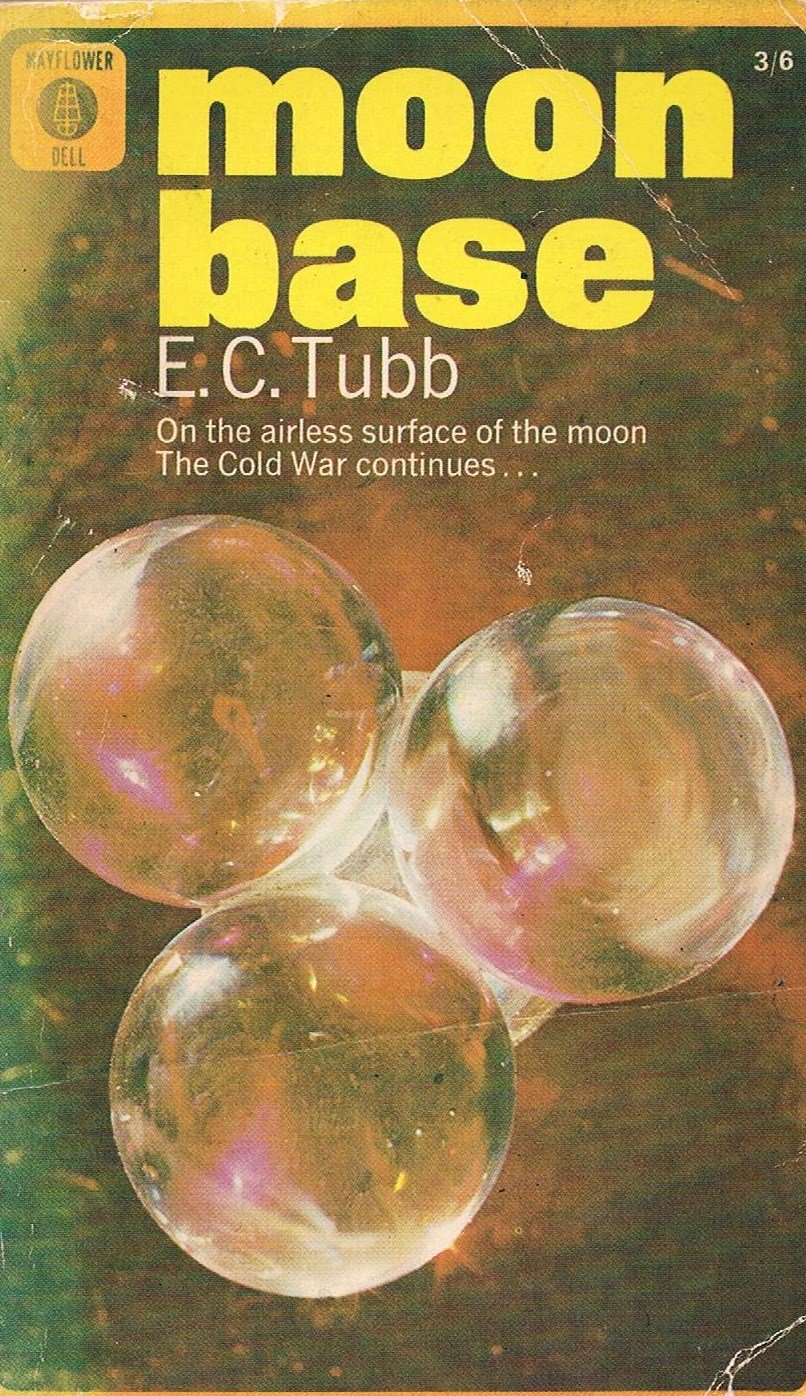
2017 February 10th:
UNFORGETTABLE BOOKS WITH FORGETTABLE PLOTS
Odd, but true: Moon Base, by E C Tubb, is a book I have read and enjoyed quite a few times, yet I remember amazingly little about the main thread of the plot. It's something to do with an artificial intelligence being bred on the Moon, I think - but I wouldn't bet my life on it!
Now, how can this be? Surely, a forgettable plot must be inadequate, somehow. There must be something wrong with it.
And yet, I suspect that's the wrong critical approach and that, on the contrary, we're on to something more interesting and difficult than a search for defects - we may instead be on the track of an unusual virtue.
Moon Baseis an unassuming tale with a banal title. Banal cover, too, with banal and misleading subtitle, "On the airless surface of the moon the Cold War continues". (The real punch comes from something a lot bigger than the Cold War.)

The novel is probably not much known, and certainly not hyped. It is, however, an engrossingly written tale, with a protagonist and a non-stereotyped heroine worth the reader's concern. The lunar setting, also, succeeds in being convincing, though we're not shown much of the outside as we are in, for example, Earthlight. And here is another mystery. Why doesn't the book suffer from its concentration on the indoors - its limitation, for the most part, to the interior of the Base?
Answer: because, somehow, the special conditions of the Moon filter through the walls. Somehow, we never forget where we are, for there's always the sense that things can happen on the Moon which would not get the chance to happen on Earth.
"This man," he said casually. "Is he a serious type?"
"Who, Colin?" She looked thoughtful. "I suppose you could call him that. He certainly can't take a joke."
"It wouldn't have been a joke if I hadn't arrived on the scene."
"But you did."
"Only by chance. I still don't know what really brought me up here."
"So?"
"So, damn it, you were almost murdered!" Her calmness was exasperating. Even if she were inwardly convinced that she had not been in danger her reactions were all wrong. She laughed and that made it worse.
"If pigs had wings they would fly," she said. "If you're going to worry about all the things that might have happened but didn't then you'll have no time to live at all..."
Something, some force, is altering the probabilities of life... a force which has been allowed to grow in the special conditions of the moon base.
And this spine-tingling frontier of discovery co-exists with the old-fashioned idea of a British presence on the Moon sharing the satellite with US and Soviet bases. An attractive mixture of themes.
There's our clue. Plots are relatively forgettable because they are mere excuses on which to hang what we're really after: namely, settings. The flavour of a story comes from its setting.
2017 February 9th:
FORTUNATELY FOOLED BY COLOUR
The imagination catches fire for the "wrong" reasons. Looking at the following lovely picture of old-style Mercury's Hotside, for instance:

- you can imagine how one's child self thinks, great, I'd love to be there, amid all that splendid red and orange!
Of course it would in reality be a high-temperature hell. But the practical knowledge comes fortunately too late to prevent the sense of awe and wonder from taking hold, so, stubbornly, a little corner of our minds continues to wish that we could go there - suitably protected, of course.
Besides, some of the creatures that live there - salamanders, rock lizards, energy beings etc - must like it. So we can enjoy it vicariously with them.
The routes by which an image wins our hearts can be tortuous and illogical, but if the result creates great fiction, there's no need to complain. And those winding mental streams are often begun with a gushing spring of sheer colour.
Colour, if you like, is a sort of go-between, reconciling us to the uninhabitable. This applies not only to literal colour as above, but to the metaphorical variety - the "colour" of action, including some rather stressful adventures which would be difficult to enjoy in real life...
2017 February 8th:
CHOOSING ONE OF THE THREE WT MUSKETEERS
If I had the magical chance to materialise one new book by one of the "three Musketeers" of Weird Tales, which author out of the three would I choose? That's an interesting question because my answer, though firm, takes some effort to justify.
For those who don't know the "Musketeers" (as L Sprague de Camp calls them):
The three authors, in their alphabetic order, are Robert E Howard, H P Lovecraft and Clark Ashton Smith. They were the indispensable stalwarts of Weird Tales in its golden period.
Howard (1906-36), the Texan, was the master of the colourful action tale, with more than a dash of haunting poetic perspective. Lovecraft (1890-1937), the New Englander, pushed the frontiers of the horror tale into science-fiction, creating an amalgamated thrill of cosmic fear. And Smith (1893-1961), the Californian, with his jewelled tales was a universe in himself.
Who was "the greatest"? It's a harmless game, to try to pick one of them.
First, let me drop Howard from consideration, because I rank him somewhat below the other two, though in some respects he was the most skillful writer of the three. The Hour of the Dragon - the only full-length Conan novel - is an unputdownable masterpiece of splendid adventure, superbly told and worth any number of re-readings, but still, there's a kind of ceiling to him; he doesn't pitch his thrills to burst up to the vertiginous enchantment of (say) Smith's Xeethra or HPL's The Shadow Out of Time.
I suppose what I'm saying is that whereas Howard was a brilliant fuser of existing historical themes, the other two were more than that - they were brilliant inventors of themes.
So which new book would I choose to materialise - Smith's or Lovecraft's?
I surprise myself with my choice. It is Clark Ashton Smith. I test this, imagining my excitement at holding the new volume in my hands. I'd be excited either way, whether it was by CAS or HPL, but the former would set my pulse racing even more. Why? Given that HPL is the greater thinker, the more suspenseful storyteller... why choose Smith instead? After all, Smith could never have given us the spellbinding dramatic irony in At the Mountains of Madness in that scene when the reader knows that the frozen things are going to thaw and awake...
Ah, but with Smith the fascination is in the setting more than in the plot. The stories are good as stories - but they're real strength lies in their world-building, their scene-setting, their status as destinations for the reader's mind. This is more like what you'd really want if you had a machine to transport you to other worlds, times, and universes. You wouldn't go there primarily to do things but to be there. Smith duly takes you there. Want to go to Mars, Venus or Mercury? No problem. Just pick up Vulthoom, The Immeasurable Horror, or The Immortals of Mercury, start on the first paragraph, and you're off into the blazing brilliance of the Old Solar System at its most evocative and powerful.
As to how he does it, that's another issue, which I don't feel able to tackle today...
2017 February 7th:
Here is an unusual diary entry, a one-off.
(It is a copy of the section which I have just added to the About Us page.)
PRACTICALITIES
As you may imagine, there must be hundreds of hours' work in a site this size. In fact at the time of writing this little note I'd put the figure at over two thousand hours.
As yet, I
haven't earned anything from it. In 2019 I should get my state pension
but until then I feel bound to ask for support for the site - a few
one-off pounds or dollars from each of my thousand-or-so readers (see the donate button on the nav bar) would assure the site's survival. I am self-employed with a low
income and would much
appreciate your help. This is not about getting rich, but about ensuring the continuance
of a good thing - Solar System Heritage.
Otherwise, it's touch and go from now till April 2019.
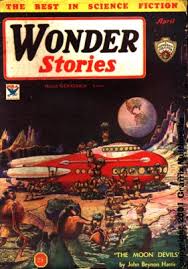
2017 February 6th:
SECOND THOUGHTS ON A HARSH VERDICT
A story I dismissed with a wail of disappointment on one of my pages is now nudging my mind, saying, "Psst, Zendexor, maybe you were a trifle hasty."
Well, I did always want the story to be good, because of its theme, a fascinating but under-exploited theme, and recently (since hope springs eternal in the human breast) I reread it and found that in some ways it actually could be said to be quite good.
It is, after all, by a top-flight writer.
...a searchlight was playing a flood of brilliance on a scene which caused us to gasp incredulously. The surface of the granite-like rock, to the height of some seventy or eighty feet, was covered with carvings in high relief - an involved, ingenious ordering of the figures of men, animals, and conventional forms.
The first astonished silence was succeeded by a babel of excited talk. Everyone spoke at once, and no one listened. And no wonder; compared to this revelation, our earlier discoveries dwindled to mere nothings. It seemed that we might have found the lunar Book of the Dead carved upon this mighty stone page...
- John Wyndham, The Last Lunarians (Wonder Stories, April 1934, as The Moon Devils)
I stand by my main criticism, which is that the Moon people - when they revive - are treated with absurd lack of consideration by both the author and by by the story's Terran protagonists. But my disappointment, the first time I read it, sprang partly from high expectations. During the recent second reading my expectations were abysmal, and so, contrariwise, they were exceeded. This time I was looking for mere crumbs...
..."A door," he said. "There's a door in the cliff!"
We crowded up to him and found that the square was bordered all around by a narrow crack. Millennia ago, when there had been a wind on the Moon, the grey sand had drifted up at the foot, but it only took a few moments' scratching to lay bare the threshold of the stone panel. Already, at the ruins in Clavius, we had established that the lunar practice had been to swing a door upon a central pivot so that it turned sidewise through ninety degrees, leaving a passage to either side...
"Millennia ago, when there had been a wind on the Moon..." Mere millennia? Amazingly recent! This itself gives one ideas. Supposing a new advance in whateverology upset all our time-charts and indicated to us that the Moon had been radically different quite a short while ago... I don't know how such a notion could be justified. It would have to be radical.
But then, that's what sf is good at - radical fun.
2017 February 5th:
WHAT THE LEMURIANS KNEW ABOUT MARS
...I may speak of the living fluids that gather perniciously at the poles of Mhuth; and of certain dark Presences, neither material nor phantasmal, that assail the invader of the red, ruinous Mhuthian cities...

Not much to go on, just a couple of CLUFFs, but then, what do you expect? I mean, given that our knowledge of our own planet's ancient lost continent of Lemuria is somewhat patchy... it's a bit much to hope that we'll be fully briefed on what they knew about the Red Planet in those days of yore.
In fact, you may well ask: how do we even know that these words, spoken by the Lemurian, Hespire (whose voice comes down to us in the fragment entitled Ascharia, an unfinished tale by Clark Ashton Smith) refer to Mars at all?
Well, fortunately, we can establish that. The proof comes in the next paragraph, in which the Lemurian refers to the asteroid progenitor planet:
...the planet that disappeared from the heavens only a decade agone, flaring like a young sun ere it died out on the constellated darkness. Voyagers between Mhuth and Mhaggalok have found its far-scattered fragments; and the largest of these whirling planetoids have been named, and their orbits charted...
This at least tells us that Mhuth is Mars, and Mhaggalok is Jupiter.
I've just thought of a nightmarish dilemma.
Suppose you're in a house that has caught fire. In one room is the only surviving copy of a hitherto undiscovered volume by Edgar Rice Burroughs, detailing John Carter's further adventures on Jupiter. In the other room is the only surviving copy of a hitherto undiscovered volume by Clark Ashton Smith, full of stories about his Old Solar System.
And suppose there is not time to save both of them!
Which would you rush in and grab?
I hope I would be able to make up my mind before both were incinerated...
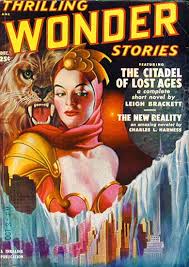
2017 February 4th:
THE NON-ROTATING EARTH
On the fringes of Old Solar System literature, we have the planetary-disaster story. Interesting catastrophes sometimes occur to our world or to its neighbours.
I don't much like it when worlds are blown up, as the Moon is in Jack Williamson's Legion of Space (if I remember correctly), or are otherwise absorbed (as the poor old Moon, again, is in Fritz Leiber's The Wanderer). I'm too fond of our satellite to countenance such wrecking. However, tales where this sort of cosmic vandalism occurs are often classifiable as OSS.
Let me now mention two stories in which the Earth itself has undergone a stupendous transformation - it has ceased to rotate. Two stories in which our own world has become, like OSS Mercury, a planet with a permanent dayside and nightside, and a twilight belt in between.
The first is Leigh Brackett's Citadel of Lost Ages. A long (65-page), sinister, powerful novella, set many centuries after the disaster.
Brackett does give a reason for this most amazing of all imaginable disasters:
..."Legend tells... how when the dark star passed all Earth was rent and shaken and its spinning slowed, so there was no more day and night. How the cities were thrown down and the mountains moved and the seas ran wild and millions died."
We're in for an epic quest into the dark hemisphere.
"They knew what was coming... It was why they build the Citadel, to preserve man's knowledge and power for those who might survive."
A Citadel of power, sought by both the human remnant and the new species that has evolved in the darkness. Some time I am going to re-read this story, which I read so long ago that I've forgotten all but the mood. A sense of mystery and loss. A dark adventure in more ways than one. Recommended!
Also recommended is a story by J G Ballard, The Day of Forever. Entirely a mood piece, this one - as one expects of Ballard.
Here, no reason is given for Earth's cessation of spin. (Well, a near-cessation, actually. During three months the dusk line advances a half mile across North Africa.) We're just plonked into the eerie situation.
...At Columbine Sept Heures it was always dusk. Here Halliday's beautiful neighbour, Gabrielle Szabo, walked through the evening, her silk robe stirring the fine sand into cerise clouds. From the balcony of the empty hotel near the artists' colony, Halliday would look out over the drained river at the unmoving shadows across the desert floor, the twilight of Africa, endless and unbroken, that beckoned to him with the promise of his lost dreams. The dark dunes, their crests touched by the spectral light, receded like the waves of a midnight sea...
One might as well leave out the reason. After all, just consider the amount of energy which must be locked up in Earth's spin. Surely, if it were brought to a stop by any cause whatsoever, it's inconceivable that anyone would in fact survive.
Unless of course a kind of Lensman-type inertialess drive were locked onto it... hmmm....
2017 February 3rd:
HOW DEEP-BURIED IS THE SCIENCE?
We all know that the literature of the Old Solar System has realistic and unrealistic ends to its spectrum. At the realistic end are those works which were scrupulously based on what was scientific opinion at the time - such as Clarke's The Sands of Mars. Close to the other end lies Barsoom, at the "dreaming pole" of literature, as Brian Aldiss termed it in Trillion Year Spree.
I want to point out, though, that the connection with science is never completely lost. If it were, we would not be talking about science fiction at all. The science-fictional sense of wonder depends on some link with physical reality.
To me, the most unscientific author of all is Ray Bradbury. Yet even he manages to stay within the essential penumbra of science, even when in Ylla he stretches it to the uttermost:
...Afternoons, when the fossil sea was warm and motionless, and the wine trees stood stiff in the yard, and the little distant Martian bone-town was all enclosed, and no one drifted out their doors, you could see Mr. K himself in his room, reading from a metal book with raised hieroglyphs over which he brushed his hand, as one might play a harp. And from the book, as his fingers stroked, a voice sang, a soft, ancient voice, which told tales of when the sea was red steam on the shore and ancient men had carried clouds of metal insects and electric spiders into battle...
It's because they are electric spiders... fantastic war machines, spidery - you see why? Because on a low-gravity world you can build more slender designs... Thus the dream is linked to the reality of Mars' lesser size and lower gravitation.
The ductile, stretched-out link between OSS visions and science can likewise be traced in the equally colourful work of Clark Ashton Smith. The Venus of his The Immeasurable Horror is the ultimate in hot-planet over-fecundity. Sure, Venus isn't like that - but it could have been. In The Plutonian Drug he's quite respectful to the ninth planet's remoteness and cold, though he connects it with life:
...the stuff is a by-product of vegetable fossilization. Doubtless it is many billion years old, and dates back to the time when Pluto possessed enough internal heat to make possible the development of certain rudimentary plant forms on its blind surface...
These great authors achieve their effects partly by means of the creative tension between the sayings of science and the traditions of science fiction. Both give streams of facts: the one physical, the other mental. They swirl and combine... and produce stories. Luckily for us.
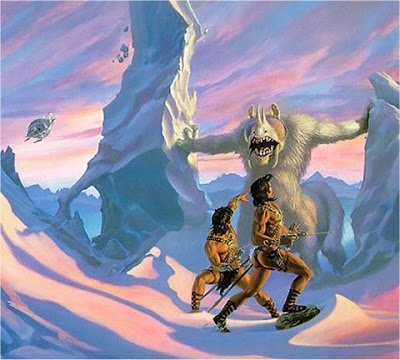
2017 February 2nd:
COMPARATIVE MARTIAN ZOOLOGY
...The apt was our most consistent and dangerous foe.
It is a huge, white-furred creature with six limbs, four of which, short and heavy, carry it swiftly over the snow and ice; while the other two, growing forward from its shoulders on either side of its long, powerful neck, terminate in white, hairless hands, with which it seizes and holds its prey...
And the description proceeds for three more paragraphs, in the chapter "Through the Carrion Caves" in Edgar Rice Burroughs' The Warlord of Mars. I dare say most readers of this site are familiar with the passage, especially as Burroughs himself (in the same lazy fashion as he re-used the story of the Barsoomian Tree of Life) repeated the description of the apt word for word in more than one volume.
Now you've had the apt, it's time for the heela.
"Heela - what's a heela?"
"That - " Darnad pointed.
Skulking towards us, its hide exactly the same mottled shades as the foliage of the trees, came a beast out of a nightmare.
It had eight legs and each leg terminated in six curved talons. It had two heads and each head had a broad, gaping mouth full of long, razor-like teeth, glaring yellow eyes, flaring nostrils. A single neck rose from the trunk and then divided near the top to accommodate the two heads.
It had two tails, scaly and powerful-looking, and a barrel-shaped body rippling with muscle.
It was unlike anything I could describe. It could not exist - but it did!
Well, I don't know about you, but I agree with Michael Moorcock's narrator in this passage from City of the Beast. The thing could not exist. Whereas the apt, in my opinion, could.
Perhaps it might be possible to rescue the "heela" as an ingredient for fiction, if one transmuted it into a "monster from the id" à la Forbidden Planet.
More comparative studies like this are needed, many more... We critics could then be like ambitious mad scientists trying to isolate the unknown Element X which makes some books great and others mere flops in comparison.
In such a study, one would have to admit there's more to it than just the different characteristics of the apt and the heela. There is also the superior style of The Warlord of Mars. Indeed, if one were to re-write the Barsoom series in a more telegraphic, less dignified style, all the series' colour and imagination and invention would not be enough to save it from artistic failure.
2017 February 1st:
COMMENTS ON THE MONTH JUST GONE
I was able to complete the updated reports on page-view winners and the Zones Cup for January by evening today, thanks to the fact that I made acquaintance with Microsoft Excel last month. It certainly does save time, compiling the stats that way! Still, I'm not up to doing a full Diary entry as well. Back to normal tomorrow, I hope.
But before I go off to the land of Nod, let me congratulate the Martians for winning the Zones Cup. This is the first time that the Terrans have had to yield first place to another planet.
Mars doesn't do all that well in the Interplanetary Knock-Out, but in the Zones, where all the Mars-related pages count, the Red Planet's influence can be brought properly to bear.
>> January 2017



